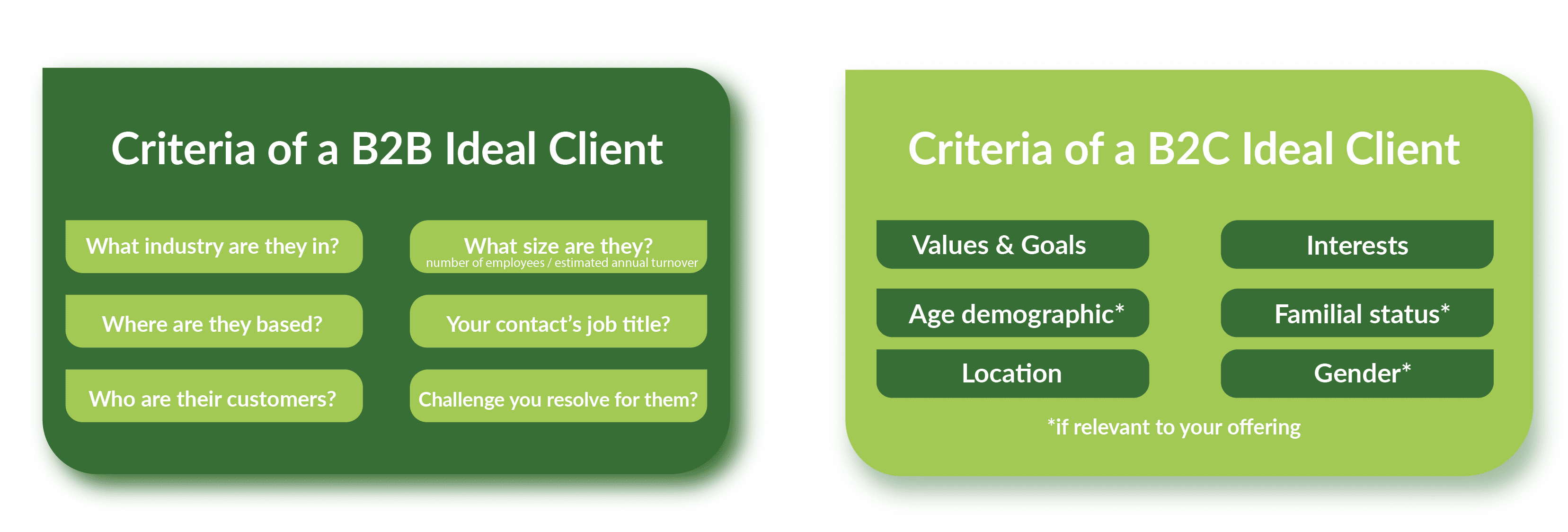The Ultimate Guide to Sales Outreach Planning for SMBs
If you’re a small business owner or looking to improve your approach to sales and marketing, this guide will help you formulate and improve your customer outreach strategy.
What we’ll cover:
- The importance of customer outreach to small businesses
- Reasons why strategy and planning are key when it comes to customer outreach in small businesses
- The role of marketing in your sales outreach
- A simple guide to creating a customer outreach strategy for your small business
- Simple changes you can make today to massively improve your outreach strategy

What do you mean by sales outreach?
Sales outreach is the term used to describe any outgoing activity that is done on behalf of your business to connect with existing or potential customers. The goal of your business’ outbound activity is to provoke inbound activity from potential customers in the form of connection requests, enquiries, quote requests or purchases. We’ll discuss this as customer outreach because it can be made up of a combination of both sales and marketing activities. It can include passive touch-points, including many of your marketing efforts, (branded graphics on your company vehicle) or active ones, many of which fall under the category of sales activities (emailing a prospective customer to introduce yourself).
Inbound marketing ideas to include in your Outreach Plan
- Outdoor Signage (a full guide to outdoor marketing)
- Vehicle graphics and car wraps
- Search Engine Optimisation and Pay-Per Click advertising
- Organic and Paid Social Media Activity
- Exhibitions and Events
- Networking
- Leaflet Drops and Mass Mailings
- Branded Stationery and Website
- Reviews and Referrals
- Email campaigns
Importance of customer outreach to small businesses
With a limited number of hours in your day, and an infinite number of hats to wear as a small business owner, squeezing an outreach plan into your weekly schedule might feel like an insurmountable task. Below, we’ll talk you through breaking that down into bite size chunks. First though, let’s look at why a customer outreach plan is crucial to small businesses.

Do you have an engaged pool of current customers? Do they order frequently and have great relationships with you? Fantastic. That’s great for today, and perhaps this month, perhaps even this year. But what will happen if you don’t add to that group of loyal customers? Even in the very best case scenario, where you continuously deliver the consistent, top-quality service we know you’re famous for, at some point, some of those loyal customers will inevitably move on. Some will retire, sell their businesses, change roles, or close the business altogether. To secure sustainable growth, or at the very least stability, over any meaningful period of time in your business’ life, you will need to add to your pool of loyal customers. Take control of this by establishing a consistent outreach strategy.
The role of marketing in your customer outreach
Outreach plans are typically made up of (and strongly associated with) sales activities. When you hear customer outreach, you probably think of cold calling and direct email. Everyday, successful sales teams use these to connect with potential or dormant customers. However, as a small business owner, you may not have the time to dedicate to calling 100 potential customers a day, or you may feel unconfident or uncomfortable doing so.
Marketing is a fantastic way for small businesses to take control of and improve their customer outreach. This is because outreach activity is proven to be more effective when received through multiple, layered and personalised touch points. Use marketing to warm a lead up by introducing them to your business through sponsored social media ads, direct mail or appearing in their search engine results and then follow up with personalised sales activity. As a small business owner, approaching customer outreach with a blend of both sales and marketing efforts will mean your prospects have already been introduced to your business’ values and goals to some degree. It will increase your potential customer’s awareness of your offering and give you lots more to talk about together.
The crucial importance of strategy and planning when it comes to customer outreach in small businesses.
How does that saying go? The cobbler’s children have no shoes? An all-too-common dilemma faced by small business owners. As an entrepreneur, you wear the hat of CEO, COO, Finance Director, Product Creation Team, Customer Service Representative, Head of Marketing, Sales, Manufacturing, Distribution and many, many more. For this reason, many small business owners find themselves jumping to whichever issue screams the loudest at any given time. Putting a simple strategy and schedule in place for your customer outreach will empower you to take control of your client acquisition and customer development. It will move prospecting, developing and converting new customers from an urgent, important problem to resolve once you’ve identified a gap in your pipeline, to a non-urgent, important daily or weekly task that builds control, longevity and predictability into your business.
How can I create a customer outreach strategy for my small business?
Your customer outreach strategy does not have to be extensive or elaborate. It doesn’t have to take hours every day, nor does it need to be significantly costly. Here’s an overview of what your simple, targeted, cost-and-time-effective customer outreach plan could look like.

Include in your Marketing & Sales Outreach Plan for your Small Business
- Outreach Themes: Choose 1-3 campaigns that you’ll run for the month
e.g. Lost & Dormant, Ideal Clients & Referral Campaign - Touch-points: Break each theme into 4-5 touch-points
e.g. First Week – Connect on social media;
Second Week – Post them a mailer;
Third Week – Email them;
Fourth Week – Call them to follow up and start a conversation. - Month overview: With the above, you will get a theme and touchpoint for as many days in the week as is realistic for you. Start small and consistent, build the habit and then start introducing more into your plan.
Simple changes you can make today to massively improve your customer outreach strategy.
WHO – WHY – HOW – WHEN
Who are you targeting?
Decide who you will be targeting in advance. Without this, you will lose valuable time contacting potential customers without any direction, or worse still, spending the time you have dedicated to reaching out to prospective customers, deciding who to talk to.
Two routes to identifying who to target are:
Create an ideal client avatar to determine the profile of prospective clients you should be trying to reach.
You can start by profiling your most profitable current clients; depending on whether you sell B2B or B2C the criteria may vary.
Review your customer landscape for any potential threats or opportunities to maximise on.
Do you have a large bank of past customers who have slipped into your dormant or lost categories? Depending on your business, this may be those who haven’t ordered in 6 months, or over 5 years. Perhaps you have clients who have only ordered from you once in the past that you should reach out to in order to educate them on the other ways you could add value to their lives.
Why are you getting in touch with them?
A common deterrent many small business owners come up against when it comes to outbound activity is the fear of being shut down or having an awkward conversation. The way to avoid this is by identifying the compelling reason for you to engage with the past/prospective customers. Why would they care to talk to you? Uncover compelling reasons for your prospects to want to talk to you thoroughly researching the goals, challenges and needs of your ideal client avatar and by warming the conversation up with marketing.
Sales Nugget
If you sell B2B, simply search TOP 10 CHALLENGES OF [INDUSTRY] and be ready to receive a list of potential problems your business can help to resolve for your prospect.

How are you getting in touch?
We know that conversion is more likely, the more touch points a potential client has with a brand. Decide the routes you’re going to take to get in touch with your prospects. Remember to blend marketing and sales tools to achieve a layered approach. Incessant emails will appear spammy and annoying. A blend of connecting on social media, appearing in their search engine results, an eye catching box or booklet through the post, an email introduction and then a phone call will appear omnipresent and salient.
When are you reaching out to clients?
You need to decide on the frequency with which you engage in this outbound activity for two reasons. One, consistency is key in building habits. A set frequency (once a day, once a week) will enable you to start and cement the habit of customer outreach. Two, there needs to be some level of consistency in the exposure these prospects have to your brand in order to build that salience and recognition. After repeated varied, consistent interactions with your brand, they will think of your business with more fluency and associate your brand with an increased level of credibility.

Choose the frequency and consistency of your efforts based on the nature of your outreach campaign.
Is it an ongoing outreach campaign, like follow-up care calls and emails that you complete after each purchase? You might do this once a week, with customers receiving one to two touch points after each purchase.
Is it a seasonal campaign, like driving pre-Christmas sales? You’ll probably want to run this once a year and have frequent touch-points over the course of this campaign, perhaps once or twice a week.
Or is it an ongoing re-engagement campaign to target Dormant and Lost customers? You might run this throughout the year with Dormant and Lost customers receiving a touch point once or twice a month.
Takeaways
- Customer Outreach is key in maintaining and growing your small business
- Successful outreach is supported by a strategy and made up of both sales and marketing activities
- Approach Customer Outreach with a blend of layered touch-points to interest and engage the prospect
- Establish the who, why, how and when of each campaign to guide you to success
We’re here to help with your customer outreach. Email or give us a call for a chat and no obligation quote.
